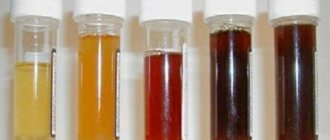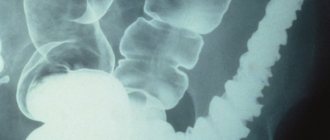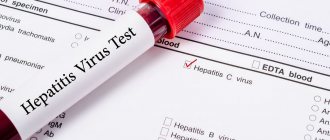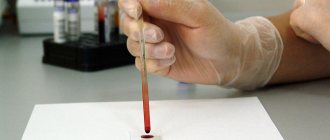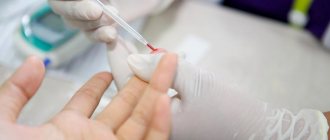Blood is a liquid, mobile connective tissue consisting of plasma and formed elements. The human body can lose it as a result of bleeding for various reasons.
In order for the recovery process to proceed in the best possible way, it is necessary to familiarize yourself with the general rules of nutrition, the causes of loss and other important aspects. It is important to know which foods to include in your diet and which to exclude.
The article displays extremely useful information on this topic, with a detailed description of the problem.
When is it necessary to restore blood?
Blood loss may not only occur due to physical damage, such as visible cuts in the skin. There are also a number of other reasons that are worth considering before moving on to the next point.
Thus, it is necessary to restore blood:
- During menstruation. As you know, this is the appearance of bloody discharge from the genital tract every month. It is a feature of only the female body and affects the physiological state.
- After childbirth. During the birth of a new person, blood loss is inevitable. The normal average amount of blood lost by a woman during childbirth is up to 300 ml.
- When a large blood vessel ruptures. This can be caused by injury to the surface of the body.
- In some diseases of the body , during which blood loss occurs, for example, colon cancer, is accompanied by bleeding from the anus.
- After donation. People who donate need to replace blood loss after each donation.
- After some operations associated with large blood loss.
Recovery Diet
After donating blood, its complete recovery occurs in 50-60 days.
The fact is that each of the components needs a certain period of time to normalize. In order for the composition and volume of blood to normalize much faster, you should follow a certain diet. Eat more protein than usual.
Doctors advise taking iron-containing vitamin complexes. It is also worth including vegetables and fruits, cereals and herbs in your diet. The basic rule in order to quickly restore blood is to drink enough water. This can be not only ordinary mineral water, but also juices, fruit drinks, and teas. Fruits are the main source of glucose and fructose, which are necessary for the normal composition of our blood. Below are some products, the use of which can significantly improve and cleanse the blood.
- Grape. Contains a huge amount of vitamins, as well as potassium, magnesium and other important elements for our body.
- Cherry. Contains fructose and glucose, rich in vitamins C and B.
- Melon. Rich in sugars and vitamins C and PP.
- Honey. Has many useful vitamins. Taking honey for two months can improve your condition and normalize your blood composition.
- Carrot juice. The juice contains a large amount of vitamins C, B, A. This healthy drink is a unique remedy that quickly tones the body. Perfect for people suffering from anemia and vitamin deficiency.
- Nuts. Walnuts are used to treat many diseases. Patients with anemia take peeled hazelnuts with honey. This is a very effective and useful product.
- Apples. They have a huge content of iron, carotene and potassium. You should also eat apples if you have anemia.
Interesting article: List of products that thin the blood and prevent the formation of blood clots
Folk remedies
Traditional recipes are popular with many people and sometimes outperform medicinal ones. Since ancient times, people have used various decoctions, tinctures, and prepared herbs and roots.
The most popular traditional medicines that have a positive effect on the circulatory system are the following:
- Nettle infusion. Able to increase hemoglobin and have a positive effect on changes in the number of red blood cells (increase).
- Rosehip infusion. It affects the absorption of iron due to the high content of ascorbic acid.
- Freshly squeezed juices with cognac and honey. Beneficial due to high iron content.
- Red clover tea. Promotes recovery, positively affecting the circulatory system.
- A mixture of dried fruits and nuts. Contains useful microelements.
Recovery after blood loss
Knowing how to restore blood loss is very important. Urgent measures taken will help a person’s life. There are various methods for restoring blood volume. Let's look at the main methods:
- restoration with liquids;
- medical procedures (including infusion therapy, blood transfusion);
- restoration with food (this method is not effective for large blood loss);
- doctors can prescribe iron-containing drugs in order to restore hemoglobin and red blood cell levels;
- decreased physical activity;
- They use various vitamins (for example, group B) or their complexes to strengthen the body and blood formation.
Other methods
Along with generally accepted means of treatment, we must not forget about the methods of alternative medicine. They also have a beneficial effect on the human body. Here are those that help restore the resource we need:
- Cleansing the body with water and honey. Water flushes out toxins and waste, cleans blood vessels, and reduces blood cholesterol levels. Honey strengthens blood vessels and prevents the formation of blood clots.
- Thalassotherapy. Treatment using marine natural resources. Sea water in its chemical structure is close to the composition of human blood. It is very useful to take salt baths and breathe sea air.
- Hirudotherapy. Treatment with leeches accelerates blood circulation, saturates blood cells with oxygen and renews it.
What foods restore plasma?
Next, we will talk about products that restore blood for various causes of blood loss.
Donation
The day before donating blood, you should exclude from your diet: fatty meat, sour cream, butter, cream, nuts, seeds, halva, mayonnaise, ketchup, ham.
That is, all fatty and difficult-to-digest foods. Even eating a small piece of cheese or spreading butter on a small slice of bread will undoubtedly affect the donor's blood test. Mandatory foods in the donor's diet: cottage cheese, boiled meat, boiled potatoes, fruits and vegetables, water porridge. For breakfast, it is recommended to drink sweet coffee or tea.
Interesting article: List of foods that increase hemoglobin in the blood in women and men
In order to quickly and efficiently restore the composition of a donor’s blood, he needs to add protein-rich foods to his diet . This can be milk, eggs, fish, plant products that contain large amounts of iron (spinach, parsley, buckwheat, pomegranates, apples).
It is worth noting that drinking alcoholic beverages is possible only 48 hours before the procedure. And taking medications containing aspirin and analgin 72 hours in advance.
Important to remember! Smoking is prohibited for an hour before and after donating blood.
Failure to comply with these important points can significantly affect your test results and your health.
After operation
The patient’s diet after surgery largely depends on what type of surgical intervention was and on what organ it was performed.
Here are some rules for a person’s nutrition after surgery:
- On the first day after surgery, the patient can drink water, but not carbonated water. It is necessary to monitor the patient’s water balance, because water is the main component of health and well-being. In addition to water, the patient can be given drinks diluted with water (juices, compotes, herbal teas, fruit drinks).
- The number of servings should be 6 or 7 times a day. But it is important to note that portions should be small.
- After major bleeding, it is advisable to eat only liquid food.
- the temperature of the food consumed by the patient should not be higher than 45 degrees.
When choosing dishes, pay attention to your desires and tastes. Try to diversify your menu, but do not forget that every dish in your daily diet must contain foods containing vitamins and all useful substances.
Interesting article: Foods that increase and decrease iron in the blood
After chemotherapy
Nutrition should be balanced and include different food groups. These should be: dairy products, protein, fruits and vegetables, bread and cereals.
- Dairy products include: kefir, milk, fermented baked milk, yogurt, yogurt, butter, cheese, condensed milk. This group contains all the useful vitamins and substances that have a positive effect on the human body and saturate it with all the elements useful for life.
- Protein-rich foods are: eggs, beans, nuts, peas, fish, meat.
- Vegetables and fruits can be either raw or boiled.
- Bread and cereal group. This includes corn, oat and wheat flakes, various porridges (including buckwheat, rice, oatmeal, barley, semolina). Products in this group contain vitamin B1 and carbohydrates that the body needs. The intake of such products should be in the daily diet of every healthy person.
Every day, the patient should consume foods from each group. Often, chemotherapy adversely affects the digestive organs, which can cause certain obstacles to proper and healthy nutrition.
Interesting article: Blood thickening products: 7 most effective recommendations!
During menstruation
You need to consume enough vitamins. These vital elements are found in parsley, spinach, and lettuce and are a source of iron and B vitamins. You also need to stock up on nuts. These products are rich in fats that are valuable for the body, they saturate and give energy. Some of the healthiest nuts for the female body are: cashews, almonds, pine nuts and hazelnuts.
Fruits are recommended during menstruation. Their main feature is that they contain all the necessary vitamins that a woman’s body lacks during this difficult period.
Interesting article: What products cleanse the blood?
Eating whole grain products can normalize and improve your emotional state during menstruation.
Red meat. This product contains more iron. But if you are a vegetarian, it doesn't matter. You can replace this product with any other, which will also be a source of useful microelements (persimmon, cranberries, bananas, eggs, seafood).
Fruits and vegetables recommended for blood loss
Among the fruits and vegetables that are useful in restoring blood are: broccoli, tomatoes, artichokes, potatoes with skin, and chard. Spinach is isolated separately. It contains the B vitamin - folate. It helps the body restore blood loss, and also helps strengthen the vascular wall and stabilize blood pressure. Taking it can be considered the prevention of stroke and heart attack.
Healthy fruits include peaches, kiwi, and citrus fruits. Apples are considered an effective product for blood purification and replenishment processes. They are also useful for improving the functioning of the lymphatic system and blood flow through the vessels. The fruits are rich in iron; an additional advantage is the easy absorption of the product. Just eat them with the whole peel, this makes it easier for the body to recover.
What happens when blood is drawn
Blood hemoglobin delivers oxygen to working muscles and is critical for performance, so doctors take a strictly specified volume that will not prevent the donor from leading a normal life in the future.
When a person donates blood, he gives on average 400-500 ml of fluid, which is about 10% percent of the total blood volume. About a third of this volume is made up of red blood cells, and the rest is mainly water (more precisely, plasma with substances dissolved in it). Water is replaced within a day if a person is getting plenty of fluids, but replacing the mass of red blood cells can take about two months. If a person is well trained, he or she will not notice a drop in hemoglobin levels at rest or even with light to moderate exercise.
What is the cause of the bruise
When they say that a nurse has a light hand, they most often mean that she gives injections painlessly. Everyone's sensitivity is individual and medications also cause different reactions, but experience and skill when hitting with a needle depend on the healthcare worker.
- Failed procedure. Venous blood collection is more difficult than, for example, intramuscular injections or vaccinations. It happens that it becomes necessary to make several attempts, sometimes the vein is pierced through, and there is also the possibility of using a needle that is too thick. And in very extreme cases, insufficient sterility occurs. Now, in the era of disposable gloves, syringes and needles, this is rare, but nevertheless, it is necessary to take this possibility into account. Hematoma can be superficial or deep. If blood gets into the tissue behind the vein, then the outside of the bruise may not appear immediately or may not be noticeable at all. Even when the needle is inserted, sharp pain sometimes occurs if a bundle of nerve endings is touched. This feeling also does not go away immediately and has no external manifestations. To make it go away faster, it is recommended to take the same measures as for hemorrhage.
- Phlebeurysm. This disease most often affects the lower extremities, but in some cases, which include pregnancy and childbirth, the vessels are also affected in the arms. Nodes form, the walls of the veins become fragile and thin, and severe bleeding is possible with fluctuations in pressure and any load.
- Thrombophlebitis. With increased blood clotting or as a result of infection, after manipulation a large blood clot forms in the vessel, the patient notices that the vein has become hard and hurts, looks dark, hard, and feels burning and distension. Swelling occurs and the temperature rises, the hand turns red, swells, and discomfort spreads from the armpit to the fingers.
- Some problems arise with reduced blood clotting. Before inserting a needle under the skin, you need to warn the healthcare worker about the diagnosis, since stopping the bleeding can be much more difficult. The natural blood clot that closes the hole in the vein during normal coagulation does not have time to form, so a hematoma is virtually inevitable.
Some drugs, particularly aspirin or arthritis medications, affect clotting. It is advisable not to take them before taking blood.
How to normalize blood composition
With critically high blood losses, the content of components and plasma in its composition decreases. In this case, it is advisable to use infusion therapy. Solutions are used as an increasing plasma-substituting medium. However, transfusion is an emergency way to help save the patient's life. But at the same time, it does not normalize the qualitative composition of the blood; it is important to restore the functioning of one’s own circulatory system.
Ways to increase the level of blood components:
- Platelets - the normal amount in the blood of a healthy adult is considered to be 180-400 thousand units / μl - if the level is reduced, the indicator can be increased by consuming vitamins B and A, thrombosis stimulants (Thrombopoietin), Dexamethasone, Prednisolone.
- Leukocytes - the normal level is considered to be 3.98-9.0 * 109 U/l (in women up to 10.4) - it can be increased with the help of diet, stimulators of leukocyte synthesis (Pentoxil, Leukogen).
- Red blood cells - the normal level is considered to be 3.7 - 5.3 * 1012 / l (in women up to 4.7) - they can be increased by taking iron-containing drugs (for example, Hemobin, Ferritin).
Seeds and beans to restore blood
These products are rich in iron, in terms of dry weight - up to 3.9 milligrams of the element per half cup. The group of legumes includes chickpeas, different types of beans, black beans, and lentils. Also rich in iron (4.2 milligrams per serving) is pumpkin, especially its seeds. Therefore, to restore blood loss at home with the help of products, it is recommended to consume pumpkin seeds. Another useful property of the product is considered to be anthelmintic activity.

